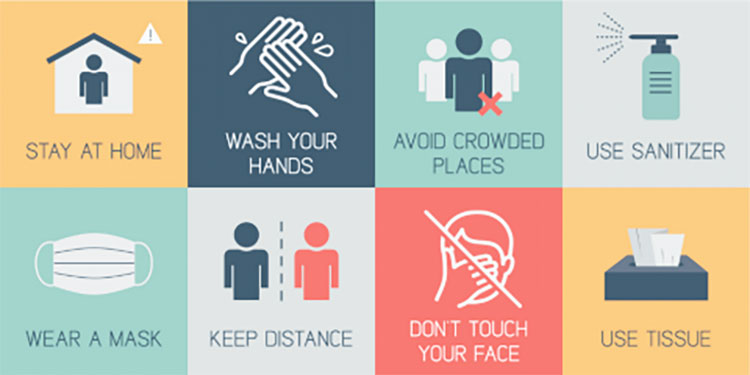Protect your vision for tomorrow. Learn the facts. Today.
Are you at risk for losing your sight to diabetes?
By Cheryl L. Dejewski
With diabetes at epidemic levels, you probably know (or are) one of the 30+ million Americans with the disease. Whether or not the cause is due to lifestyle (poor diet, lack of exercise), genetics or both, be aware: Diabetes does more than affect blood sugar levels. Without proper precautions, it can lead to nerve damage; limb amputation; and heart, kidney and eye disease. Blindness is the complication diabetics fear the most. And, if you are Latino, you have up to a three times greater risk of losing vision to diabetes than a white person.
We encourage members of the Latino community to challenge the statistics by educating themselves about the importance of early detection and treatment. To help our readers protect their vision, we asked the team at Eye Care Specialists, an ophthalmology practice that has served the vision care needs of more than 200,000 Wisconsinites since 1985, to answer the following questions.
How does diabetes steal vision?
“With diabetes, fluctuating and high blood sugar levels can cause the blood vessels that nourish the retina in the back of the eye to become weak or abnormal. This “retinopathy” leads to leakage and bleeding that can blur vision and permanently impair sight. Diabetic retinopathy is now the leading cause of blindness among working-age Americans,” says Brett Rhode, MD, Head of Ophthalmology at Aurora Sinai Medical Center and a partner at Eye Care Specialists, an ophthalmology practice that has been recognized for exceptional service in the Latino community, especially in the care of diabetic patients.
Is retinopathy the only vision risk?
“In addition to diabetes causing retinal damage, it greatly increases the risk of other eye concerns. Diabetes doubles the likelihood of developing cataracts, a clouding of the lens inside the eye that blurs vision and requires surgical removal and implantation with a lens implant to repair. Diabetics are also twice as likely to develop glaucoma, a condition in which increased fluid pressure in the eye causes damage to the optic nerve that leads to permanent loss of side (and eventually all) vision,” says Rhode.
What are the symptoms?
“Most people don’t notice a problem with their vision until retinopathy is so far advanced that lost sight may not be able to be restored. That’s why annual dilated eye exams are crucial. Also, call your doctor immediately if you notice vision changes in one or both eyes (not associated with blood sugar fluctuations), numerous floating spots (like spider webs), or a veil over your vision,” says David Scheidt, OD, a medical optometrist and consultant for the Wisconsin Diabetes Advisory Group’s original guidelines.
How is diabetic eye disease diagnosed?
“Diabetes-related changes in vision can sometimes temporarily affect vision or occur so gradually that people don’t notice or take action. But, even if a person’s vision appears to be good, serious significant damage may be present and progressing. That’s why diabetic eye disease can only be diagnosed through a comprehensive eye examination that includes pupil dilation (enlargement with drops) to best see inside to check the back of the eye for early signs of retinopathy,” explains ophthalmologist Michael Raciti, MD, a local leader in the fight against diabetic eye disease. Raciti adds, “Diabetes-related sight loss is often preventable with blood sugar control, yearly exams, and early intervention. But all of our expertise, equipment and treatments are of no use if patients don’t come in for regular eye check-ups.”
Are you at risk?
“Diabetic eye disease can appear as early as a year after the onset of diabetes, and up to 45 percent of people with diabetes have some degree of retinopathy (damage to the retina),” says Daniel Ferguson, MD, a partner at Eye Care Specialists, where tens of thousands of diabetic patients receive comprehensive care. “All diabetics—Type 1, Type 2, insulin-dependent or not—are at risk, which increases with the number of years you have diabetes. And, because Latinos have up to triple the risk of developing diabetes than whites, the threat of vision loss is correspondingly higher. That’s why we can’t stress enough the sight-saving benefits of annual eye exams.”
What treatment is available?
“When treatment is necessary, we have been very pleased with the success of medications (such as Avastin, Eylea, Lucentis and Abysmo) that can be painlessly injected into the eye to decrease blood vessel leakage and inhibit abnormal new growth—thus staving off progression of diabetic eye disease. We evaluate each patient’s response individually to determine if and when (about every 4-12 weeks) they should receive injections. As a result, we have seen amazing results, including not only stabilization of vision, but in some cases, improvement in sight,” reports Daniel Paskowitz, MD, PhD, an ophthalmologist with credentials from Harvard and Johns Hopkins who performs injection procedures on a daily basis.
Should you be screened for diabetic eye disease?
Do you have diabetes? Was your last eye exam more than a year ago? If you can answer “Yes” to those two questions, then it’s time to have your vision checked. Keep in mind that appointments are often covered by insurance, Medicare or Medicaid. If these options are not applicable, arrangements can usually be made to accept cash, check, credit card or financing plan payment. “Don’t hesitate. It’s an opportunity to ensure that you see life to the fullest—now and in the future. And, remember, EVERYONE should have their eyes checked every two years after age 40 for other conditions, like glaucoma, that may be causing permanent vision loss without you even noticing it,” advises Scheidt.
FREE Booklets & Information
Eye Care Specialists’ doctors are dedicated to providing the highest quality medical, surgical and laser eye care services. They are honored to have their team members named “Top Doctors” by both Milwaukee and MKElifestyle magazines. They also frequently provide continuing education to fellow physicians and have written their own series of booklets on cataracts, glaucoma, diabetes, dry eye, and macular degeneration (AMD). Call 414-321-7520 ext. 217 and leave a message for FREE copies. Comprehensive examinations and second opinions are available at their offices on 6th & Wisconsin Ave., Mayfair Road across from the mall, and 102nd & National Ave in West Allis. For more information about eye diseases and their credentials, visit www.eyecarespecialists.net.OPTIONAL SIDEBAR —How to reduce diabetes-related vision loss
Have a blood sugar test every three years after age 45 to screen for diabetes
Keep blood glucose levels close to normal through diet, medication and exercise
Don’t smoke
Keep blood pressure under control
Keep cholesterol levels low
Check hemoglobin A1C levels at least every four months. Aim for less than 7.0
Schedule dilated eye exams once a year, or as often as your Eye M.D. suggests




